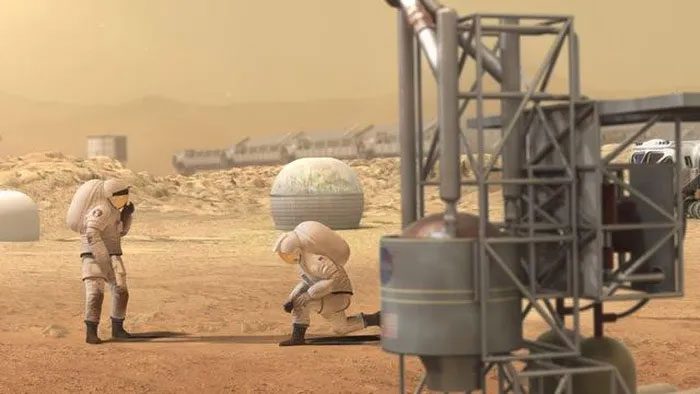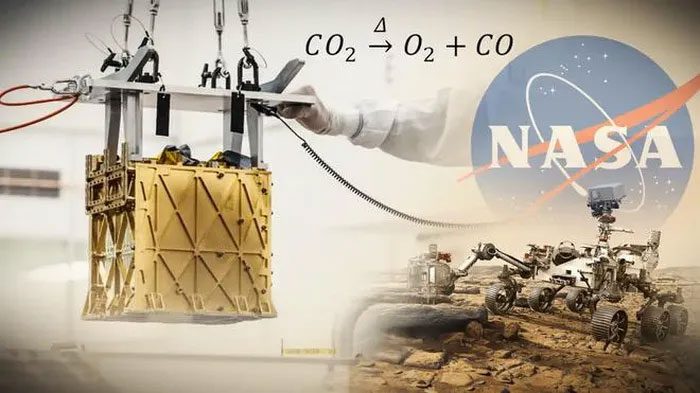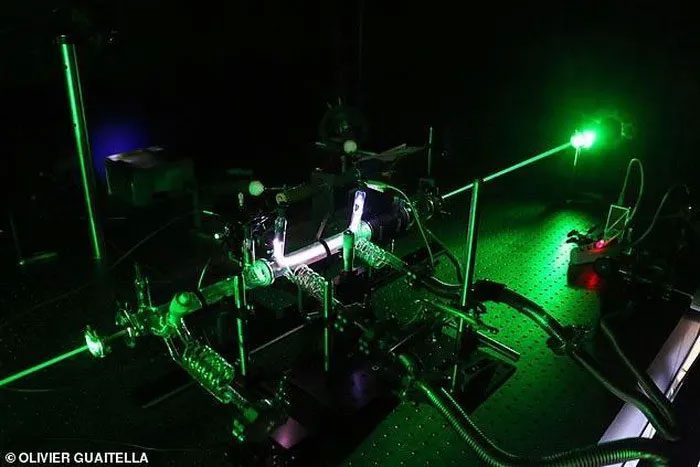The day humans settle on Mars may not be far off.
While the idea of sending humans to Mars was once limited to science fiction, NASA hopes it can become a reality by the late 2030s.

Image of an astronaut extracting resources on Mars. (Source: NASA).
In 2021, NASA achieved what science fiction writers have dreamed of for decades: producing oxygen on Mars. A microwave-sized device attached to NASA’s Perseverance rover has converted carbon dioxide (CO2) into breathable oxygen in just 10 minutes.
Now, international physicists report that they have devised a method to use an electron beam in a plasma reactor to generate more oxygen, paving the way for better space settlement.
Living on Mars, why not?
One of the main obstacles to reaching Mars is the lack of oxygen on the Red Planet. However, scientists have invented a new technique based on plasma to produce and separate oxygen in the Martian environment.
This technique not only plays a crucial role in developing life support systems but could also be used for fuel processing, creating building materials, and fertilizers on Mars.
When NASA’s Perseverance rover landed in the Jezero Crater on Mars in 2020, it carried the Mars Oxygen In-Situ Resource Utilization Experiment (MOXIE). This device pulls in Martian air, which is 95% carbon dioxide (CO2). By pumping an electric current between two oppositely charged electrodes in an electrochemical cell, MOXIE can separate carbon dioxide (CO2) into carbon monoxide (CO) and oxygen ions. The oxygen ions then combine to produce oxygen gas.
This experiment successfully demonstrated NASA’s theory of oxygen production on Mars. However, for better efficiency, MOXIE needs to pressurize and heat the Martian air, which requires energy-consuming components and makes it bulkier.

The device is named the Mars Oxygen In-Situ Resource Utilization Experiment (MOXIE). (Source: NASA)
Dr. Vasco Guerra, a physicist at the University of Lisbon (Portugal), believes a plasma reactor could be a better approach. An electron beam, accelerated to a specific energy level, can separate carbon dioxide (CO2) into its constituent ions or plasma, similar to what MOXIE has done.
Furthermore, a plasma reactor would be well-suited to Mars’ atmosphere, which is about 100 times thinner than Earth’s. Dr. Guerra stated, “Creating and accelerating an electron beam in thin air will be much easier. The universe has an ideal pressure for plasma activity, and Mars has precisely this pressure.”
In the lab, he and his colleagues pumped air designed to match the pressure and composition of Mars into metal tubes. Unlike MOXIE, these do not need to compress or heat the air. However, by firing an electron beam into the reaction chamber, they can convert about 30% of the air into oxygen. They estimate that this device could produce about 14 grams of oxygen per hour: enough oxygen to support 28 minutes of breathing, the research team reported in the Journal of Applied Physics.
Dr. Guerra’s team still needs to address some practical issues. To operate on Mars, the plasma device will require a mobile power source and a place to store the oxygen it generates, all of which could make it bulkier than MOXIE.
If space agencies around the world are willing to invest millions of dollars in its development—as NASA did with MOXIE—then the plasma approach could advance.
According to scientists, Mars’ atmosphere is primarily composed of carbon dioxide (CO2), which can be separated to produce oxygen and carbon.
However, researchers from the University of Lisbon (Portugal), the Massachusetts Institute of Technology (USA), the Sorbonne University (France), Eindhoven University of Technology (Netherlands), and the Dutch Institute for Fundamental Energy Research noted that there are TWO MAJOR BARRIERS hindering oxygen production on Mars.
Dr. Vasco Guerra, a co-author of the study, stated: “First, the process of breaking down carbon dioxide (CO2) molecules to extract oxygen. That is a very difficult molecule to break apart; Second, the separation of oxygen produced from a gas mixture containing both carbon dioxide (CO2) and carbon monoxide (CO).”
“We are looking at these two steps holistically to address both challenges simultaneously. And that’s where plasmas can be the solution to these two problems,” Dr. Vasco Guerra added.

Scientists have invented a new plasma-based technique to produce and separate oxygen in the Martian environment. (Source: DM)
Plasma is the fourth natural state of matter, alongside solids, liquids, and gases. It contains freely charged particles such as electrons, which are light and easily accelerated to very high energies along with an electric field.
Dr. Guerra stated: “When electrons, like bullets, collide with a carbon dioxide (CO2) molecule, they can either directly break it apart or transfer energy to make it move faster. At a large scale, this energy can be transformed into the breakdown of (CO2).
Together with our colleagues in France and the Netherlands, we have experimentally demonstrated the validity of these theories. Moreover, the heat generated in the plasma is also beneficial for oxygen separation.”
Mars and Beyond
One day, this technique could not only help astronauts breathe on the Red Planet but could also be used as a means to produce fuel and fertilizers, according to Michael Hecht, an experimental scientist at the Massachusetts Institute of Technology (USA).
Specifically, the oxygen produced through this plasma-based technique could be key to creating an breathable environment for Mars settlers. It could also serve as a starting point for producing fuel and fertilizers, allowing settlers to cultivate crops on the Martian surface.
Additionally, this technique could prove useful right here on Earth, researchers say.
Scientists further added that by separating CO2 molecules to produce green fuel and recycle chemicals, plasma technology could also help address climate change issues on Earth.
This research was conducted ahead of NASA’s Artemis I mission, scheduled to launch on August 29, 2022, paving the way for future missions to the Moon and Mars.


















































